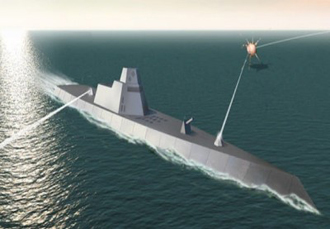Within two years the US Navy will replace the current Arleigh Burke-class destroyers in its Pacific fleet with Zumwalt-class stealth destroyers that will cost $6.6 billion apiece, according to Fox News.
“With its stealth, incredibly capable sonar system, strike capability and lower manning requirements, this is our future,” said Admiral Jonathan Greenert, chief of naval operations, after a visit to the shipyard in Maine where the ships are being built.
The ship’s capabilities on the high seas combined with maneuverability close to shore makes it ideally suited for the many islands and straits of the western Pacific in light of Washington’s new Asia-centric military focus.
The Zumwalt-class destroyers will equipped with exotic weapons like the free-electron laser which can zap missiles out of the sky with 1 megawatt beams that deploy a broad spectrum of wavelengths. While some doubt that the so-called super-laser can be deployed before 2018, last year Dinh Nguyen, its Vietnamese American lead researcher, announced a major breakthrough in bringing up the laser’s power level.
The stealth destroyers will also be equipped with electromagnetic railguns capable of rapidly firing barrages of long-range high-speed projectiles with unerring accuracy.
These and other more conventional weapons will give it the capability to be a multi-role destroyer for surface warfare, anti-aircraft and naval fire support. Strategists see it as the answer to the PLA Navy’s strategy of denying access to the waters around China.
Some remain skeptical of the Zumwalt’s practicality, especially at a $6.6-bil. price tag.
“The DDG-1000 (Zumwalt) is a nice idea for a new modernistic surface combatant, but it contains too many unproven, disruptive technologies,” noted security expert Richard Bitzinger of Singapore’s Nanyang Technological University.
Even before the Zumwalt-class destroyer is ready for deployment, the US Navy plans to deploy a fleet of smaller Littoral Combat Ships later this year to the western Pacific to counter the challenge from a rapidly-growing and increasingly aggressive Chinese navy.


